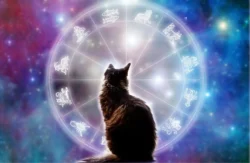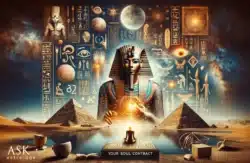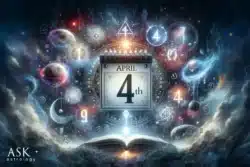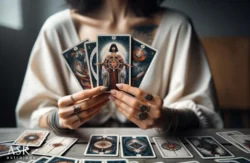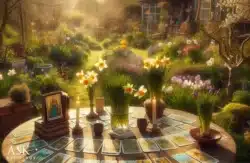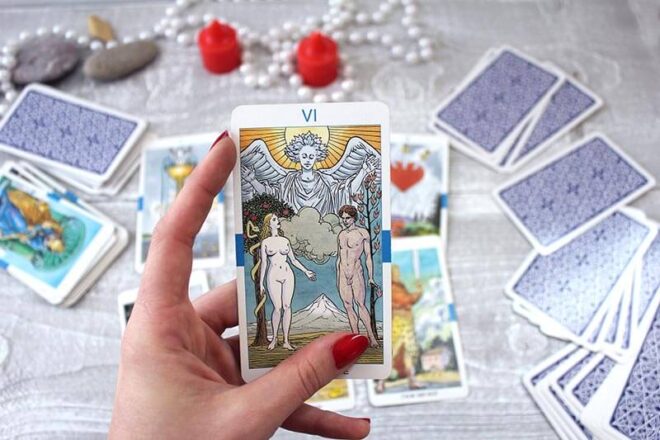What is known as “The Great Work” in Alchemy is represented as the process of the transmutation of lead into gold. The Alchemist labored over his alembics, masterfully overseeing the transformation of lead to tin, tin to iron, iron to copper, copper to silver, and silver to gold. The Alchemists’ documentation of these stages of transformation is highly complex and mysterious, and it is obvious that, whatever else may be true, this process of the Great Work was regarded with the utmost gravity and respect.
The fundamental challenge which an Alchemist undertook in this task is that of transforming a substance of little or no value into one of the very highest values. Indeed, in some cases, the Alchemist did not even use lead as his “prima materia” but began with a putrid base material, such as excrement or rotting meat! The task was to extract, purify distill that which is divine from the starter substance and burn off all that diluted its perfection without in any way harming it.
Not the Common Gold
There is some reason to believe that Alchemists were indeed conducting actual chemical experiments of this kind, for modern science does indeed have its roots in the operations of these pioneers. However, many have averred that the true value of the alchemical writing on the Great Work does not lie in its contribution to science, but in its contribution to spirituality.
Next after this publicity
Psychoanalyst Carl Jung did not believe that the Alchemists were recording the developments of transforming substances in beakers and alembics because they often wrote explicitly: “Ours is not the common gold.” This implies that the value of their product could not be measured in earthly terms.
Jung assumed then that their aspirations were not material, and that their currency provided spiritual or otherworldly value, rather than financial. It was Jung’s conclusion that the Alchemists were—knowingly or unknowingly— writing about the stages of transformation that occur within the psyche and the human energy field. Simply put, they were writing about the process of sublimation.
Sublimation— that is, to sublime something— is a psychological process of elevation. To sublimate is to lift up or exalt psychic energy to a higher level of consciousness. We do this all the time with our carnal instincts, powerful emotions, or primitive impulses.
Fear, aggression, and grief are frequently sublimated into focused energy or “drive”, as we transform these powerful emotions into the fuel that propels us toward what we want. Resentment, when we do not allow it to have its way, can be sublimated into compassion, where the energy may discharge at a higher plane.
Abstaining from food is an ancient technique of sublimation, as the psychic charge generated from repressing the appetite is eventually transmuted, inducing a heightened state of consciousness.
This process of sublimation is represented in the ancient Hindu teachings of Kundalini yoga. A coiled serpent— the primordial life power— resides in the lower chakras. The aim of this yoga is to lift this power from the lower, more primitive, and carnal energy centers to the higher spiritual ones.
In this way, ideally, we are released from the bondage of craving, appetite, and attachment to worldly pleasures into the liberation of spiritual ecstasy and wisdom. However, a serpent is a powerful predator, and unleashing this power can be extraordinarily dangerous and destructive if not handled properly.
Alchemy and Art
Any artistic or creative process is fundamentally alchemical as it is the sublimation of ordinary experience into a perfect formation of Beauty. The prima materia in this case is the ordinary, mundane emotion of the artist. This raw material is of course of no value to anyone, as it comes to nothing left to itself. However, in the hands of the alchemical artist, the emotions of the individual can be exalted and sublimated into an artwork that speaks on behalf of all humanity, and can even change the course of history.
A book, painting, song, or film has the power to sculpt the trajectory of human civilization in a way that no political speech can ever nearly approximate, for art speaks directly to the heart in the language of the spirit. Such is the power of art that— even during a period of time when very little attention is given publicly to the importance of beauty— the very most expensive commodities for sale are paintings and statues of our most cherished artists, and the most expensive places to live are those with the most majestic architecture and the greatest cultural attractions.
Even the Sistine Chapel, though, is built out of the worthless lead of one ordinary man’s prosaic emotion.
The Alchemists broke the process of transformation into seven stages. These seven stages have their corollaries in the artistic process.
1. Calcination
During Calcination, the prima materia is set on fire and reduced to ashes. This is a process of purification, where impure compounds are eliminated. This stage represents the real-world experience that has inspired a piece of art. The artist has been set on fire, and the real-world experience has burnt away misconception, delusion, or fantasy. This trial-by-fire provides the grain of sand which may be turned into a pearl of wisdom.
2. Dissolution
In the second stage, the Alchemist submerges the ash in water to be dissolved. This represents a surrendering of the conscious will in the creative work. In this stage, we let our inspiration go where it wants to, even if we don’t understand how it could work or what it might mean. Just as water is fluid and shapeless, during this stage the artist does not worry about limits or boundaries. It does not need to make sense; it only needs to pull us in.
3. Separation
This is a stage of sifting and filtering. During Separation, the Alchemist and the artist isolate what is worthy of being saved and discard what is unusable.
4. Conjunction
During this stage the Alchemist was able to create the first organic compound— that is, the disparate elements collected into one whole. In the artistic process, this may manifest the “first draft” of the piece, or at least the first time some sense of holism is glimpsed. It is no longer random color, but a painting of something. It is no longer chaotic noise, for something like a coherent melody is coming through.
5. Fermentation
This stage brings an increase in potency through rotting or decomposition. Just as alcohol gains its potency through a kind of putrefaction, so a work of art is uplifted through “fermenting”. In this stage, the artist ripens and concentrates the piece by allowing parts of the work to die. Sometimes one must leave one’s favorite parts on the cutting room floor in order for the work to find wholeness; or as the great writer, William Faulkner said, you must be able to “kill your darlings”.
6. Distillation
In this stage, the substance was repeatedly boiled, and its condensation was collected. The ultimate product is a highly concentrated essence. Here the artist refines and purifies the piece, which is largely complete, except in the minute detail. This is the stage of perfecting the tiny flourishes that make a work of exceptional beauty.
7. Coagulation
Coagulation—coming together— is the ultimate stage of the Alchemical Great Work and the completion of the creation. Here we witness the wonder of sublimation, for our original impulse is at once perceptible and totally unrecognizable in the alchemical treasure which shines before us.




































